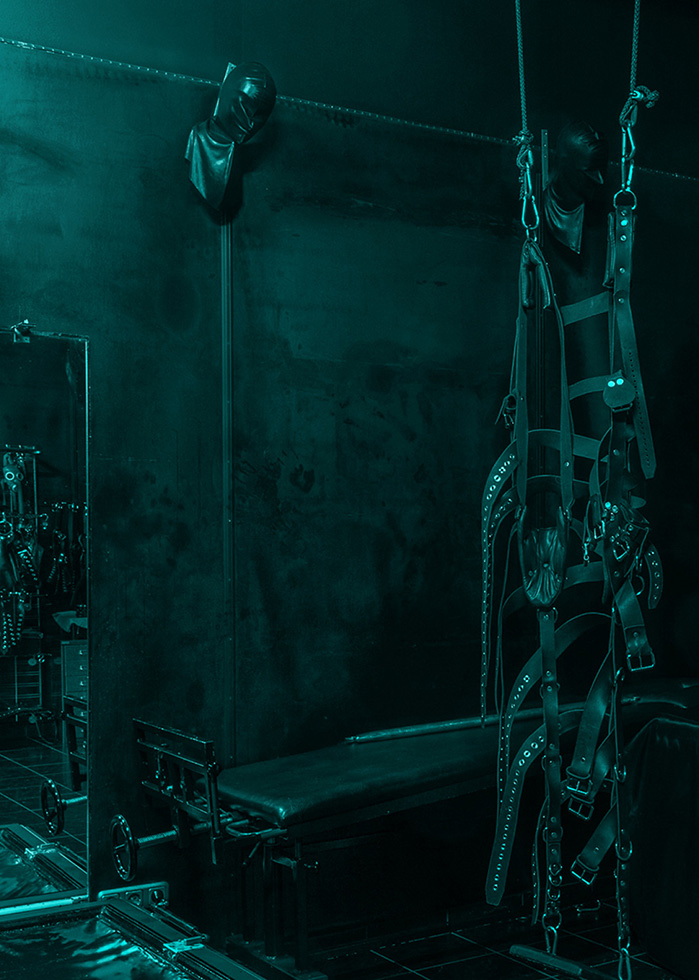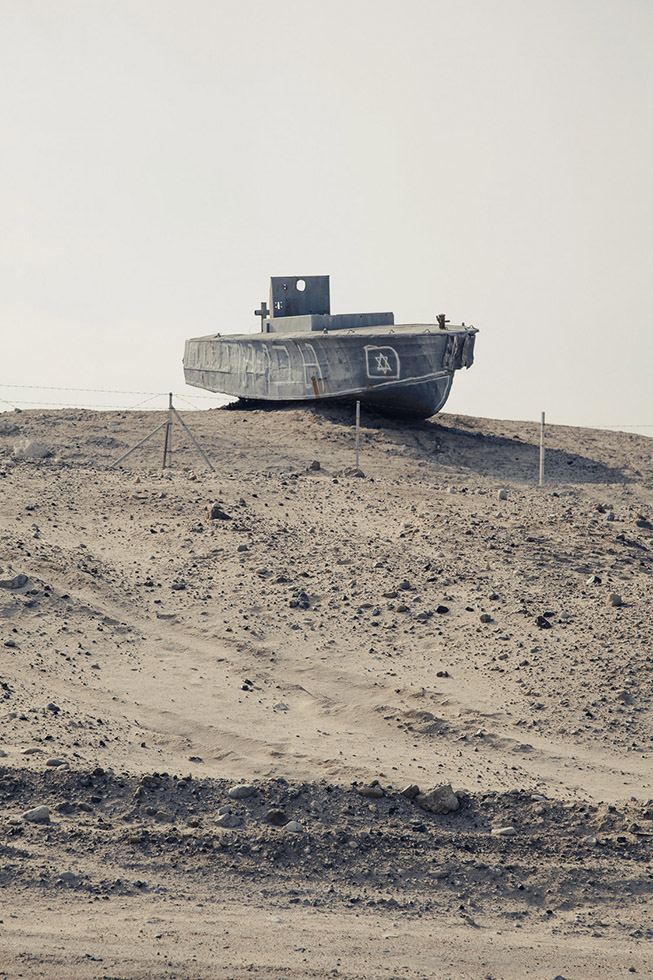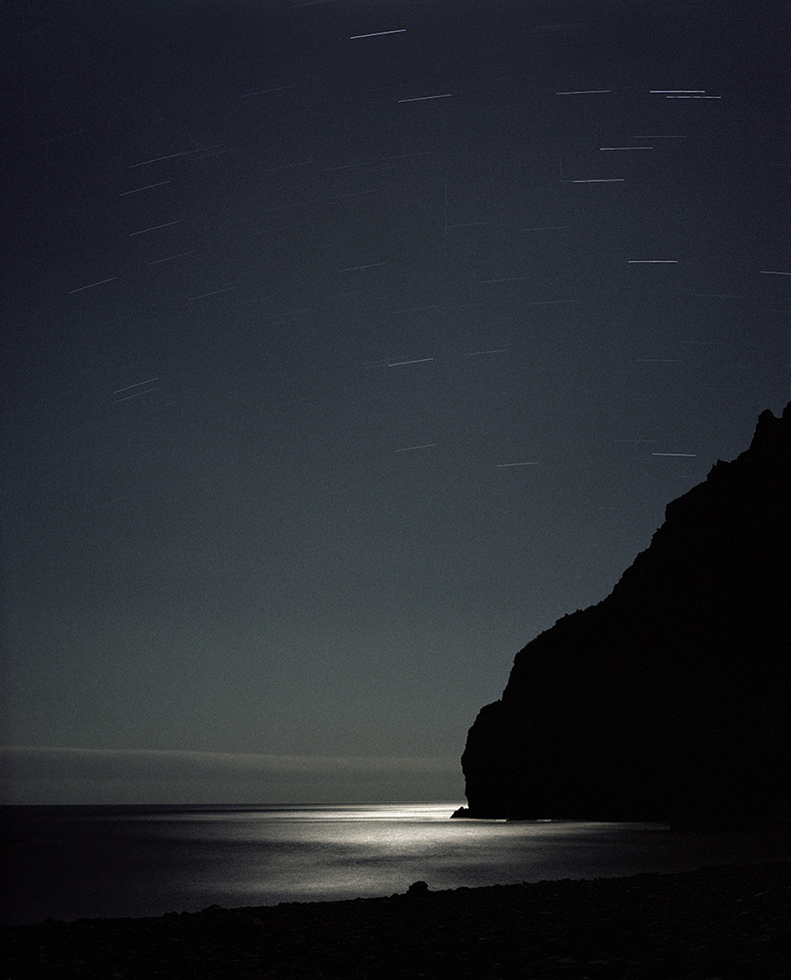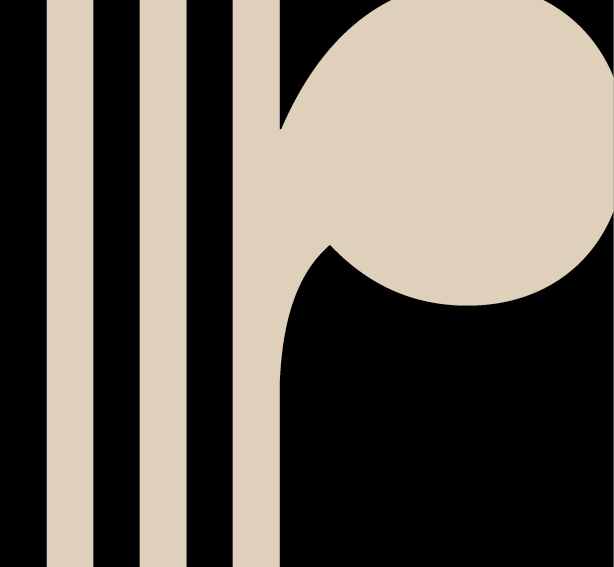01
a box full of his favourite authors is what allen ginsberg, the beatnik, brings to the bedside of bob dylan, his word-pulverizing brother in spirit. after his mysterious motorcycle accident in 1966, dylan will use this illustrious chest of books to nibble at his poetry until the stanzas contain no more holes, the lines no more fillers. if the splinters of the american dream still flow into dylan’s pen, they will be completely shattered under ginsberg’s typewriter, who travels the country with a gift from the singer, a tape recorder, and collects the basic recordings for his work ‚the fall of america‘. on the road, jack kerouac, the highway without a home, or the path to finding one, in the snapshot of the seeker there – here, the viewfinder in stephanie kloss‘ camera. only the detail, that which is to be tracked down and preserved, can reveal reality, in a goose-skin suit in front of the perception of the supposed but nevertheless great whole. the slow flow of the melody emerges from the collection and rearrangement of these takes and their varying repetition, entirely in the sense of dylan, the three-finger-picker.
02
the big picture – caught up in shuddering and fascination at the same time before the end of modernity, fukujawa’s history and the post-post-panectdotes that are deliberately plucking their armpit hair – will never die and even from the form of its shards the original condition is interpreted. thus we busily inspect the cult of aton and the connection with the foundations of our greek-jewish roots, knowing pretty well but always denying that a certain detail, the falsely inserted shard, results in a vase that we would like to see but which never existed. it is our subconscious that inserts the fragment that seems to fit into the pot of our decision-making trinity of balance/stability, dominance/power and stimulation/irritation to create the perfect form. in this sense, shaping and utilizing the impulses of the outside world, the audience can succeed in listening to dylan’s ‚coyote in the barbed wire‘ protest and, despite the sharpness of the words and the lament in the voice, slip away into warming complacency. we owe it to the stone-age design of our subconscious decision-making mechanisms that the world looks the way we want to see it.
03
those who do not move do not feel their shackles, says rosa luxemburg, this is how allen ginsberg roams the united states in his volkswagen and stephanie kloss also sets out to collect architecture out there and to take it over in sections and details. in her works she presents these focused insights detached, unleashed from the original building and reinforces this appropriation through free arrangements of the components. caught in the cognitive yoke of seeing, recognizing and judging, kloss very precisely balances the audience’s knocking question of knowledge with its veiling by retreating into architectural detail. dylan’s sardonic ’66 lyric ’sooner or later, one of us must know, that you just did what you’re supposed to do‘ need not have been the inspiration; man has always been curious and this guitar is easy to play. the artist skilfully stages johan huizinga’s ‚homo ludens‘ theory, in which play forms the basis of all cultural endeavours.
04
with the photo series ‚avalon‘, ’sodom‘ and ‚bei otto‘, kloss expands her punctual practice with the areas of interior space and landscape. as in the photographs dealing with architectural detail, the artist stalks the pictorial self-explanatory nature of photography. hidden beneath the apparent casualness of the chosen motif, the speed of recognition drives the respective reaction of the viewer. woven into the gradation of personal participation, modified masks or a ship stranded in the desert point to a content noticeably faster than the tourist-suitable crime scene of a passed away offender and communard on a canary island. whoever establishes rules risks violating them, thus stephanie kloss strolls through an sm-studio, the land of the bible and the legacy of the viennese actionist otto mühl in search of what space can imply. in the war for the power of interpretation of the respective side, which is largely fueled by the social media, the hate-filled enmity towards the opponent glows quietly behind kloss‘ work.
05
delicately juggling the opposing pairs of osmosis and contraction, we accompany stephanie kloss‘ discreet analysis of her spatial spheres and the enigmatic staging around pin and balloon. the fascination in the tension around the anticipated moment does not require a ‚what it is, what it is, yes, what is this?‘ exegesis in hysterical nina hagen style and yet we hold our breath a moment longer than we would like to admit. fever, bang, shock, laughter, our psyche draws strength and justification from the straightforward repetition of our everyday life. when the balloon won’t burst despite dylan’s insistent advice that it should do what is expected of it, it slowly becomes quiet. then, deep inside, a strand of the brain heats up again with the curious investigation about the how and the why starting now.
martin eugen raabenstein, 2024
more at stephaniekloss.de
01
Eine Kiste voller Lieblingsautoren, das bringt Allen Ginsberg, der Beatnik, ans Bett Bob Dylans, seinem wortpulverisierenden Bruder im Geiste. Nach dessen mysteriösem Motorradunfall 1966 wird Dylan mithilfe dieses illustren Bücherkartons an seiner Lyrik knabbern, bis die Strophen kein Loch, die Zeile keine Füllsel mehr enthalten werden. Wenn die Splitter des amerikanischen Traumes noch in die Feder Dylans fließen, werden diese unter Ginsbergs Schreibmaschine gänzlich zertrümmert, der mit einem Geschenk des Sängers, einem Tonband, das Land bereist und die Basisaufnahmen für sein Werk ‚Der Untergang Amerikas‘ sammelt. On the road, Jack Kerouac, die Straße ohne Heimat, oder der Weg eine solche aufzuspüren, in der Momentaufnahme des Suchenden dort – hier, der Sucher in der Kamera Stephanie Kloss‘. Nur das Detail, das Aufzuspürende und zu Bewahrende kann die Wirklichkeit aufzeigen, im Gänsehautanzug vor der Wahrnehmung des vermeintlich aber dennoch großen Ganzen. Aus dem Sammeln und Neuarrangieren dieser Takes und deren variierenden Wiederholung entsteht der langsame Fluss der Melodie, ganz im Sinne Dylans, dem drei-Finger-Picker.
02
Das große Ganze – in Schaudern und Faszination gleichzeitig gefangen vor dem Ende der Moderne, der Fukujawa’schen Geschichte und den sich beflissentlich das Achselhaar zupfenden Post-Postanektdoten – wird nie verenden, und selbst noch aus der Form ihrer Scherben wird die Urform gedeutet. So inspiziert man umtriebig den Aton-Kult und den Zusammenhang mit den Fundamenten unserer griechisch-jüdischen Wurzeln, wohl wissend aber immer verneinend, dass das eine gewisse Detail, die fälschlich eingefügte Scherbe, eine Vase ergibt, die wir zwar gerne sehen wollen, die aber so nie existierte. Dabei ist es unser Unterbewusstsein, das im Topf unserer Entscheidungstrinität Balance/Stabilität, Dominanz/Macht und Stimulanz/Reiz das passend erscheinende Bruchstück zur Formvollendung einfügt. In diesem Sinne die Impulse des Äußeren gestaltend und umnutzend, kann es dem Publikum gelingen, des ‚Koyoten im Stacheldraht‘ Dylans vorgetragenen Protestes zu lauschen und trotz der Schärfe der Worte und dem Klagen in der Stimme in wohliges Gefallen zu entgleiten. Der steinzeitlichen Gestaltung unserer unterbewussten Entscheidungsmechanismen verdanken wir, dass die Welt so aussieht, wie wir sie sehen wollen.
03
Wer sich nicht bewegt, spürt seine Fesseln nicht, so sagt Rosa Luxemburg, so durchstreift Allen Ginsberg die Vereinigten Staaten in seinem Volkswagen, und ebenso zieht Stephanie Kloss aus, um im Draußen Architektur zu sammeln und diese in Ausschnitten und Details an sich zu nehmen. In ihren Werken präsentiert sie diese fokussierten Einblicke losgelöst, entfesselt vom originalen Bauwerk, und verstärkt diese Aneignung durch freie Arrangements der Komponenten. Im kognitiven Joch von Sehen, Erkennen und Beurteilen gefangen, pendelt Kloss sehr präzise die anklopfende Erkenntnisfrage des Publikums mit ihrer Verschleierung durch den Rückzug ins architektonische Detail aus. Dabei muss Dylans hämische 66er Textzeile ‚Sooner or later, one of us must know, that you just did what you’re supposed to do‘ nicht Pate gestanden haben; der Mensch war immer neugierig, und auf dieser Gitarre spielt es sich leicht. Geschickt inszeniert die Künstlerin hierbei Johan Huizingas ‚Homo Ludens‘-Theorie, in der das Spiel Basis aller kulturellen Bestrebungen bildet.
04
Mit den Photoserien ‚Avalon‘, ‚Sodom‘ und ‚Bei Otto‘ erweitert Kloss ihre punktierende Praxis in den Bereichen Innenraum und Landschaft. Wie auch in den das architektonische Detail behandelnden Aufnahmen belauert die Künstlerin die bildnerische Selbsterklärlichkeit der Fotografie. Unter der scheinbaren Beiläufigkeit des gewählten Motivs verborgen, treibt die Geschwindigkeit der Erkenntnis die jeweilige Reaktion des Betrachters vor sich her. In die Gradation der persönlichen Anteilnahme eingewoben, deuten modifizierte Masken oder ein in der Wüste gestrandetes Schiff merklich schneller auf einen Inhalt als der touristentaugliche Tatort eines verschiedenen Gewaltstraftäters und Kommunarden auf einer kanarischen Insel. Wer Regeln aufstellt, riskiert deren Verletzung, und so durchstreift Stephanie Kloss ein SM-Studio, das Land der Bibel und die Hinterlassenschaften des Wiener Aktionisten Otto Mühl auf der Suche danach, was Raum bedeuten kann. Im durch die sozialen Medien maßgeblich angefeuerten Krieg um die Deutungsvormacht der jeweiligen Seite, glimmt die hasserfüllte Feindschaft zum Gegner leise auf hinter Kloss‘ Arbeiten.
05
Die Gegensatzpaare Osmose und Kontraktion fein jonglierend, begleiten wir Stephanie Kloss‘ dezente Analyse ihrer räumlichen Sphären und der hintergründigen Inszenierung um Stecknadel und Luftballon. Die Faszination in der Anspannung um den zu erwartenden Moment benötigt keine ‚Was es ist, was es ist, ja was ist denn dies?‘ Exegese in hysterischer Nina Hagen Manier, und dennoch halten wir den Atem einen Augenblick länger an, als wir zugeben möchten. Fieber, Knall, Schreck, Gelächter – aus der geradlinigen Wiederholung der Alltäglichkeit zieht unsere Psyche Kraft und Berechtigung. Wenn der Ballon trotz Dylans eindringlichem Rat, dass er tun soll, was man von ihm erwartet, nicht platzen will, wird es langsam still. Dann läuft erneut tief innen drinnen ein Hirnstrang heiß, bei der nun neugierig anstehenden Ermittlung um das Wie und das Warum..
martin eugen raabenstein, 2024
more at stephaniekloss.de
stephanie kloss


stephanie kloss
welt series, 2014

stephanie kloss
avalon series, 2017-2018

stephanie kloss
sodom series, 2016

stephanie kloss
bei otto series, 2014
stephanie kloss
01
a box full of his favourite authors is what allen ginsberg, the beatnik, brings to the bedside of bob dylan, his word-pulverizing brother in spirit. after his mysterious motorcycle accident in 1966, dylan will use this illustrious chest of books to nibble at his poetry until the stanzas contain no more holes, the lines no more fillers. if the splinters of the american dream still flow into dylan’s pen, they will be completely shattered under ginsberg’s typewriter, who travels the country with a gift from the singer, a tape recorder, and collects the basic recordings for his work ‚the fall of america‘. on the road, jack kerouac, the highway without a home, or the path to finding one, in the snapshot of the seeker there – here, the viewfinder in stephanie kloss‘ camera. only the detail, that which is to be tracked down and preserved, can reveal reality, in a goose-skin suit in front of the perception of the supposed but nevertheless great whole. the slow flow of the melody emerges from the collection and rearrangement of these takes and their varying repetition, entirely in the sense of dylan, the three-finger-picker.
02
the big picture – caught up in shuddering and fascination at the same time before the end of modernity, fukujawa’s history and the post-post-panectdotes that are deliberately plucking their armpit hair – will never die and even from the form of its shards the original condition is interpreted. thus we busily inspect the cult of aton and the connection with the foundations of our greek-jewish roots, knowing pretty well but always denying that a certain detail, the falsely inserted shard, results in a vase that we would like to see but which never existed. it is our subconscious that inserts the fragment that seems to fit into the pot of our decision-making trinity of balance/stability, dominance/power and stimulation/irritation to create the perfect form. in this sense, shaping and utilizing the impulses of the outside world, the audience can succeed in listening to dylan’s ‚coyote in the barbed wire‘ protest and, despite the sharpness of the words and the lament in the voice, slip away into warming complacency. we owe it to the stone-age design of our subconscious decision-making mechanisms that the world looks the way we want to see it.
03
those who do not move do not feel their shackles, says rosa luxemburg, this is how allen ginsberg roams the united states in his volkswagen and stephanie kloss also sets out to collect architecture out there and to take it over in sections and details. in her works she presents these focused insights detached, unleashed from the original building and reinforces this appropriation through free arrangements of the components. caught in the cognitive yoke of seeing, recognizing and judging, kloss very precisely balances the audience’s knocking question of knowledge with its veiling by retreating into architectural detail. dylan’s sardonic ’66 lyric ’sooner or later, one of us must know, that you just did what you’re supposed to do‘ need not have been the inspiration; man has always been curious and this guitar is easy to play. the artist skilfully stages johan huizinga’s ‚homo ludens‘ theory, in which play forms the basis of all cultural endeavours.
04
with the photo series ‚avalon‘, ’sodom‘ and ‚bei otto‘, kloss expands her punctual practice with the areas of interior space and landscape. as in the photographs dealing with architectural detail, the artist stalks the pictorial self-explanatory nature of photography. hidden beneath the apparent casualness of the chosen motif, the speed of recognition drives the respective reaction of the viewer. woven into the gradation of personal participation, modified masks or a ship stranded in the desert point to a content noticeably faster than the tourist-suitable crime scene of a passed away offender and communard on a canary island. whoever establishes rules risks violating them, thus stephanie kloss strolls through an sm-studio, the land of the bible and the legacy of the viennese actionist otto mühl in search of what space can imply. in the war for the power of interpretation of the respective side, which is largely fueled by the social media, the hate-filled enmity towards the opponent glows quietly behind kloss‘ work.
05
delicately juggling the opposing pairs of osmosis and contraction, we accompany stephanie kloss‘ discreet analysis of her spatial spheres and the enigmatic staging around pin and balloon. the fascination in the tension around the anticipated moment does not require a ‚what it is, what it is, yes, what is this?‘ exegesis in hysterical nina hagen style and yet we hold our breath a moment longer than we would like to admit. fever, bang, shock, laughter, our psyche draws strength and justification from the straightforward repetition of our everyday life. when the balloon won’t burst despite dylan’s insistent advice that it should do what is expected of it, it slowly becomes quiet. then, deep inside, a strand of the brain heats up again with the curious investigation about the how and the why starting now.
martin eugen raabenstein, 2024
more at stephaniekloss.de
01
Eine Kiste voller Lieblingsautoren, das bringt Allen Ginsberg, der Beatnik, ans Bett Bob Dylans, seinem wortpulverisierenden Bruder im Geiste. Nach dessen mysteriösem Motorradunfall 1966 wird Dylan mithilfe dieses illustren Bücherkartons an seiner Lyrik knabbern, bis die Strophen kein Loch, die Zeile keine Füllsel mehr enthalten werden. Wenn die Splitter des amerikanischen Traumes noch in die Feder Dylans fließen, werden diese unter Ginsbergs Schreibmaschine gänzlich zertrümmert, der mit einem Geschenk des Sängers, einem Tonband, das Land bereist und die Basisaufnahmen für sein Werk ‚Der Untergang Amerikas‘ sammelt. On the road, Jack Kerouac, die Straße ohne Heimat, oder der Weg eine solche aufzuspüren, in der Momentaufnahme des Suchenden dort – hier, der Sucher in der Kamera Stephanie Kloss‘. Nur das Detail, das Aufzuspürende und zu Bewahrende kann die Wirklichkeit aufzeigen, im Gänsehautanzug vor der Wahrnehmung des vermeintlich aber dennoch großen Ganzen. Aus dem Sammeln und Neuarrangieren dieser Takes und deren variierenden Wiederholung entsteht der langsame Fluss der Melodie, ganz im Sinne Dylans, dem drei-Finger-Picker.
02
Das große Ganze – in Schaudern und Faszination gleichzeitig gefangen vor dem Ende der Moderne, der Fukujawa’schen Geschichte und den sich beflissentlich das Achselhaar zupfenden Post-Postanektdoten – wird nie verenden, und selbst noch aus der Form ihrer Scherben wird die Urform gedeutet. So inspiziert man umtriebig den Aton-Kult und den Zusammenhang mit den Fundamenten unserer griechisch-jüdischen Wurzeln, wohl wissend aber immer verneinend, dass das eine gewisse Detail, die fälschlich eingefügte Scherbe, eine Vase ergibt, die wir zwar gerne sehen wollen, die aber so nie existierte. Dabei ist es unser Unterbewusstsein, das im Topf unserer Entscheidungstrinität Balance/Stabilität, Dominanz/Macht und Stimulanz/Reiz das passend erscheinende Bruchstück zur Formvollendung einfügt. In diesem Sinne die Impulse des Äußeren gestaltend und umnutzend, kann es dem Publikum gelingen, des ‚Koyoten im Stacheldraht‘ Dylans vorgetragenen Protestes zu lauschen und trotz der Schärfe der Worte und dem Klagen in der Stimme in wohliges Gefallen zu entgleiten. Der steinzeitlichen Gestaltung unserer unterbewussten Entscheidungsmechanismen verdanken wir, dass die Welt so aussieht, wie wir sie sehen wollen.
03
Wer sich nicht bewegt, spürt seine Fesseln nicht, so sagt Rosa Luxemburg, so durchstreift Allen Ginsberg die Vereinigten Staaten in seinem Volkswagen, und ebenso zieht Stephanie Kloss aus, um im Draußen Architektur zu sammeln und diese in Ausschnitten und Details an sich zu nehmen. In ihren Werken präsentiert sie diese fokussierten Einblicke losgelöst, entfesselt vom originalen Bauwerk, und verstärkt diese Aneignung durch freie Arrangements der Komponenten. Im kognitiven Joch von Sehen, Erkennen und Beurteilen gefangen, pendelt Kloss sehr präzise die anklopfende Erkenntnisfrage des Publikums mit ihrer Verschleierung durch den Rückzug ins architektonische Detail aus. Dabei muss Dylans hämische 66er Textzeile ‚Sooner or later, one of us must know, that you just did what you’re supposed to do‘ nicht Pate gestanden haben; der Mensch war immer neugierig, und auf dieser Gitarre spielt es sich leicht. Geschickt inszeniert die Künstlerin hierbei Johan Huizingas ‚Homo Ludens‘-Theorie, in der das Spiel Basis aller kulturellen Bestrebungen bildet.
04
Mit den Photoserien ‚Avalon‘, ‚Sodom‘ und ‚Bei Otto‘ erweitert Kloss ihre punktierende Praxis in den Bereichen Innenraum und Landschaft. Wie auch in den das architektonische Detail behandelnden Aufnahmen belauert die Künstlerin die bildnerische Selbsterklärlichkeit der Fotografie. Unter der scheinbaren Beiläufigkeit des gewählten Motivs verborgen, treibt die Geschwindigkeit der Erkenntnis die jeweilige Reaktion des Betrachters vor sich her. In die Gradation der persönlichen Anteilnahme eingewoben, deuten modifizierte Masken oder ein in der Wüste gestrandetes Schiff merklich schneller auf einen Inhalt als der touristentaugliche Tatort eines verschiedenen Gewaltstraftäters und Kommunarden auf einer kanarischen Insel. Wer Regeln aufstellt, riskiert deren Verletzung, und so durchstreift Stephanie Kloss ein SM-Studio, das Land der Bibel und die Hinterlassenschaften des Wiener Aktionisten Otto Mühl auf der Suche danach, was Raum bedeuten kann. Im durch die sozialen Medien maßgeblich angefeuerten Krieg um die Deutungsvormacht der jeweiligen Seite, glimmt die hasserfüllte Feindschaft zum Gegner leise auf hinter Kloss‘ Arbeiten.
05
Die Gegensatzpaare Osmose und Kontraktion fein jonglierend, begleiten wir Stephanie Kloss‘ dezente Analyse ihrer räumlichen Sphären und der hintergründigen Inszenierung um Stecknadel und Luftballon. Die Faszination in der Anspannung um den zu erwartenden Moment benötigt keine ‚Was es ist, was es ist, ja was ist denn dies?‘ Exegese in hysterischer Nina Hagen Manier, und dennoch halten wir den Atem einen Augenblick länger an, als wir zugeben möchten. Fieber, Knall, Schreck, Gelächter – aus der geradlinigen Wiederholung der Alltäglichkeit zieht unsere Psyche Kraft und Berechtigung. Wenn der Ballon trotz Dylans eindringlichem Rat, dass er tun soll, was man von ihm erwartet, nicht platzen will, wird es langsam still. Dann läuft erneut tief innen drinnen ein Hirnstrang heiß, bei der nun neugierig anstehenden Ermittlung um das Wie und das Warum..
martin eugen raabenstein, 2024
more at stephaniekloss.de

stephanie kloss

stephanie kloss
welt series, 2014

stephanie kloss
avalon series, 2017-2018

stephanie kloss
sodom series, 2016

stephanie kloss
bei otto series, 2014
